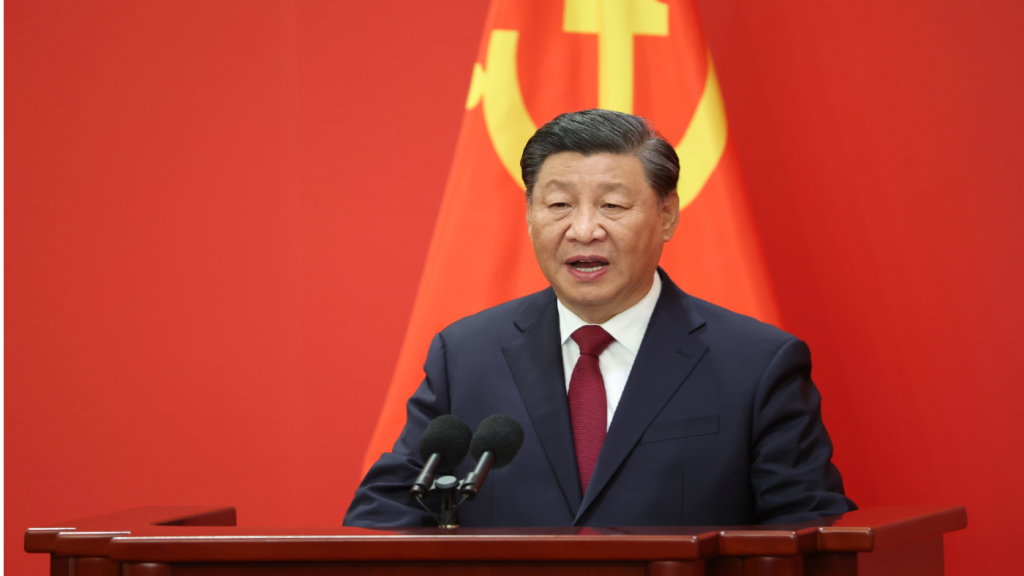China Sets First Absolute Emissions Cut Target for 2035, Falling Short of Paris Path

China has pledged for the first time to cut its greenhouse gas emissions in absolute terms, committing to reduce economy-wide net emissions by 7–10% from peak levels by 2035, “striving to do better.” President Xi Jinping announced the target in a video address to a high-level climate summit in New York convened by UN Secretary-General António Guterres during the General Assembly.
A decisive move ahead of COP30
China, responsible for roughly a third of global emissions by some estimates, is central to whether the Paris Agreement stays viable. The new nationally determined contribution (NDC) arrives weeks before COP30 in Brazil, where countries are racing to file updated plans covering the 2035 horizon. Unlike prior pledges focused on intensity and peaking before 2030, this target is an economy-wide reduction covering all greenhouse gases and will be measured from an unspecified “peak.”
Xi also announced actions to:
- Expand installed wind and solar to more than six times 2020 levels, aiming for around 3,600 GW.
- Lift the non-fossil share of total energy consumption to over 30%.
- Increase total forest stock volume to over 24 billion cubic meters.
- Make electric vehicles the mainstream in new car sales.
- Expand the emissions trading market to cover major emitting sectors.
Ambition gap flagged by analysts
Experts welcomed the structural shift to an absolute cut but judged the ambition insufficient for a 1.5°C pathway. “Anything less than 30% is not aligned with 1.5 degrees,” said Lauri Myllyvirta of the Centre for Research on Energy and Clean Air (CREA). Greenpeace East Asia’s Yao Zhe said the plan “still falls short,” even for tempered expectations. Belinda Schäpe, a China policy analyst at CREA, framed the pledge as politically cautious and argued China’s clean-energy boom could still deliver reductions of 30% or more by 2035 if current trends hold. In her words, today’s announcement should be viewed as the floor, not the ceiling.
Clean energy momentum, coal’s overhang
China’s renewable buildout continues to outpace earlier benchmarks, having cleared its 2030 wind-and-solar capacity goal in 2024. Initial 2025 data point to a surge in solar generation and a dip in coal-fired output versus last year. Several analysts see mounting evidence of a plateau in national emissions, with 2025 levels expected to be lower than 2024. The constraint is coal’s persistent role in the power system. A durable decline in coal consumption this decade will determine whether clean-energy industries remain a growth engine rather than a drag, and whether the 2060 carbon-neutrality goal retains credibility.
Geopolitics and the UN stage
The pledge landed amid divergent signals from major economies. While European officials said they will file a new plan before COP30, the United States under President Donald Trump has rolled back climate commitments, with Trump calling climate change a “con job.” From the UN podium, Brazilian President Luiz Inácio Lula da Silva warned that “no one is safe from the effects of climate change. Walls at borders will not stop droughts or storms.” Guterres pressed for plans “fully aligned with 1.5 degrees” and covering entire economies and all greenhouse gases.
What executives and investors should watch
For boardrooms and asset managers, the message is twofold: the political target is conservative, but China’s real-economy transition is accelerating. Scale effects in solar, wind, grids, EVs, and storage will keep reshaping global supply chains, commodity demand, and capital allocation. The next test is policy detail. Sectoral targets in the forthcoming 15th Five-Year Plan, tighter ETS coverage, and concrete steps to rein in coal will set the pace of decarbonization through 2035. Execution on those fronts will define the credibility of China’s 2060 neutrality goal and materially influence whether global markets can hold the 1.5°C line.
Related Article: China Releases First Corporate Sustainability Disclosure Standards








